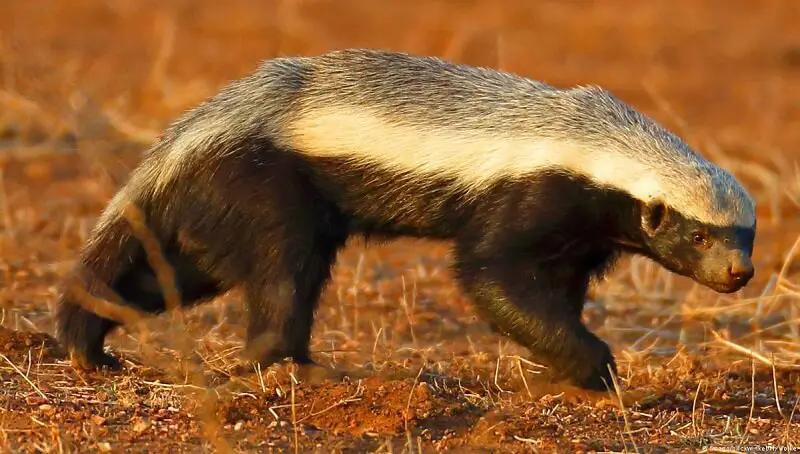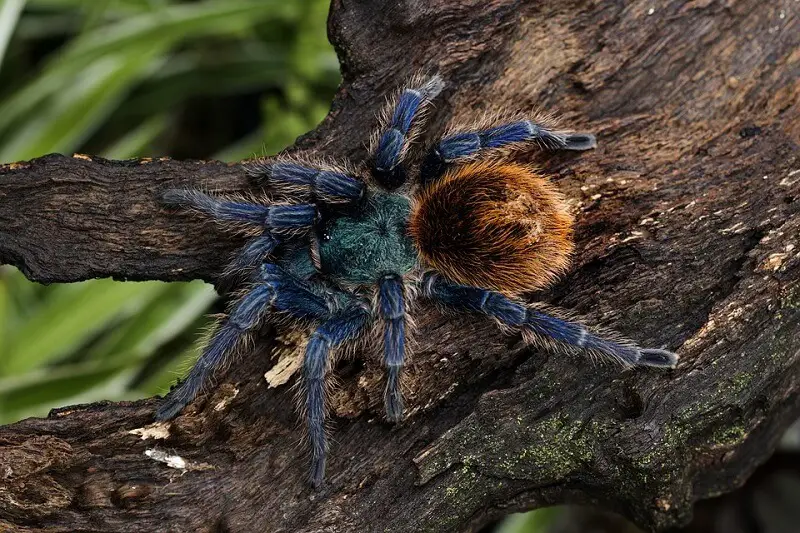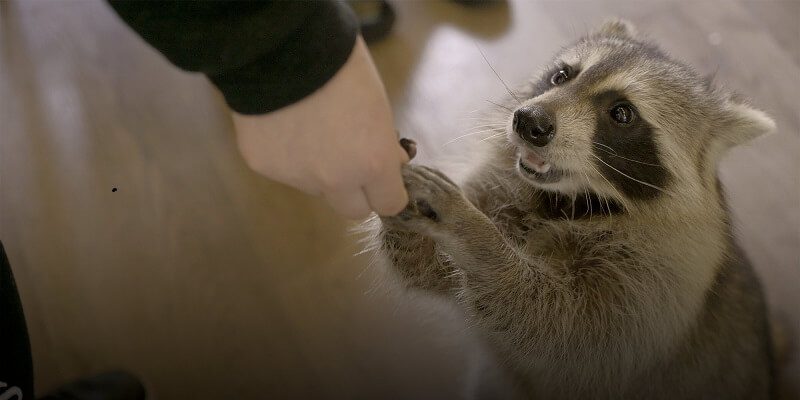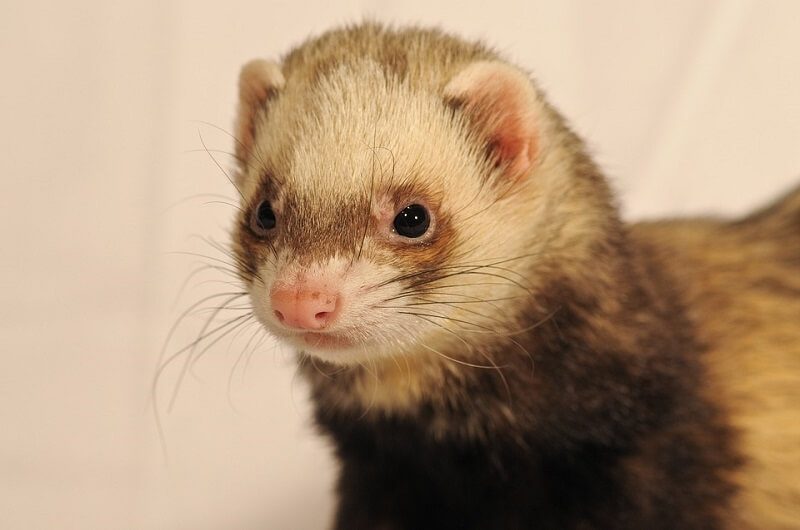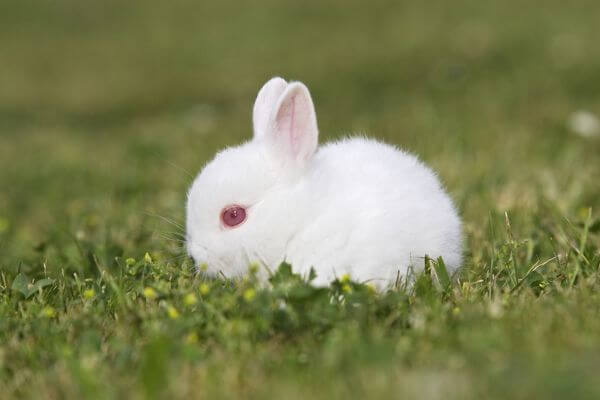Highlights of the Honey Badger (Mellivora capensis)
- Geographical Range: Occupies diverse habitats across Africa, some regions of India, and Southwest Asia.
- Distinct Appearance: Resembles a weasel more than a badger, featuring a short, flat body, a large white spot, and an overall aggressive demeanor.
- Size and Physical Characteristics:
- Weight: Males 9-16 kg, Females 5-10 kg.
- Height: 23-28 cm.
- Length: 55-77 cm.
- Life Expectancy: Up to 24 years in captivity.
- Omnivorous Diet.
- Scientific Name: Mellivora capensis.
- Family and Anatomy:
- Belongs to the Mustelidae family, which includes badgers, weasels, ferrets, and minks.
- Anatomically similar to weasels but distinguished by its long body, hard thick skin, and extreme flexibility.
- Behavior:
- Not friendly, highly aggressive, and fearless, often attacking larger animals and even humans if threatened.
- Incredible escape artist, known for its intelligence in overcoming barriers and locks.
- Danger to Others:
- Can cause severe damage with its sharp claws and powerful jaw to animals as formidable as lions and hyenas.
- Thick and tough skin resistant to physical attacks.
- Diet:
- Predominantly carnivorous, consuming animals from burrows, eggs, insects, and occasionally plants and fruit.
- Known to raid farms, particularly targeting chickens.
- Unusual Aggression:
- Does not hesitate to confront predators much larger in size, including lions and cheetahs.
- Has a varied diet in the wild, including venomous snakes, showing resilience to venom and injuries.
- Territorial Fights:
- Employs a brutal tactic against male rivals by targeting and removing their testicles to incapacitate or kill them.
The honey badger’s reputation as one of the most fearless and formidable animals in the world is well-earned, with its unique combination of physical toughness, dietary flexibility, and aggressive defensive strategies.
Honey badger or Mellivora capensis can be found almost anywhere in Africa, some parts of India, and Southwest Asia. It has a short, flat body with a large white spot and looks more like a weasel than a badger. One of the most aggressive animals in the world is not a huge beast with large, fierce teeth. And yet, compared to the honey badger, the lion, the crocodile, and the shark seem rather peaceful creatures. This mammal, not much larger than a cat, looks really cute, but, in reality, it is a predator that is not afraid of anything.
- Employs a brutal tactic against male rivals by targeting and removing their testicles to incapacitate or kill them.
In appearance, it is somewhere between the badger and the ferret. It belongs to the same family as the latter. It weighs on average only 12 kg, is 75 centimeters long, and is about 30 centimeters tall. But this fighter is a formidable predator who does not hesitate to attack larger animals. However, honey is its favorite food, hence its name.
- Weight: 9-16 kg in adult males, 5-10 kg in adult females;
- Height: 23-28 cm;
- Average lifespan: up to 24 years in captivity;
- Food level: Omnivore;
- Length: 55 -77 cm;
- Scientific name: Mellivora capensis.
The honey badger is the only species of Mellivora, which is part of the family Mustelidae, and which also includes badgers, weasels, ferrets, minks, and others. Despite its name, it is more anatomically similar to a weasel. It has a long body with hard, thick skin. Its skin is soft, allowing it a wide range of motion while held by a predator. The spine is also extremely flexible. It has small eyes and ears and long, sharp claws, all perfectly suited for combat.
Is the honey badger friendly?
No. The honey badger is not a friendly animal at all and will most likely attack you and other pets if they have the chance. In fact, the honey badger is one of the most fearless animals in the world.
These animals will continue to try to break free, even after years of captivity, and are quite intelligent and able to open doors and discover locking mechanisms. It may even jump out of the window to escape or search for food. This behavior persists throughout its life, and since it tries to escape, it will take every opportunity to attack you. Therefore, you will not be able to manipulate or caress this animal, so they are not friendly.
Some people who have tried to keep the honey badger captive have realized that it is also a very intelligent animal. Besides other skills, it is said that it is able to get out of a fenced enclosure made of wire mesh.
Is the honey badger dangerous?
You might also like my articles about:
Yes, the honey badger can be an extremely dangerous animal. But they usually attack only if they feel threatened or cornered. It will attack humans, dogs, horses, and even lions and hyenas without hesitating and cause considerable damage. It can move freely in its skin, so it can easily turn and attack a predator with its sharp claws while held down.
Its skin is extremely thick and tough, resisting arrows and even machete blows. Witnesses describe the attack as particularly fierce because it bites and scratches to release itself.
What does the honey badger eat?
Most of his diet consists of food he takes out of burrows, including rabbits, and eats the entire animal, including its fur and bones. Its powerful jaw can consume the shell of a turtle. It also eats frogs, eggs, berries, roots, bulbs, and animal corpses. Farmers in the areas where these animals live have reported that if they are hungry, the honey badgers will destroy the chicken chops. Most of the time they will exterminate all chickens and break the eggs, leaving a mess behind.
They do not hesitate to attack lions or cheetahs
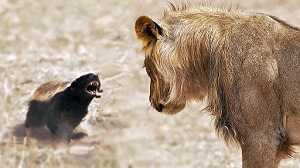 It has nothing terrifying at first sight. But there are numerous videos on the internet that show his aggression. The bold animal, not only attacks bee hives, but also other creatures such as termites, lizards, and scorpions. But above all, he challenges his opponents much more impressive in size than himself: Wild antelopes, for example, or even lions or cheetahs. In short, the honey badger is not afraid of anything.
It has nothing terrifying at first sight. But there are numerous videos on the internet that show his aggression. The bold animal, not only attacks bee hives, but also other creatures such as termites, lizards, and scorpions. But above all, he challenges his opponents much more impressive in size than himself: Wild antelopes, for example, or even lions or cheetahs. In short, the honey badger is not afraid of anything.
More than 60 species of animals in the Kalahari Desert are part of its diet. They do not back up when it comes to eating large snakes or even vipers.
Sometimes it is bitten by vipers, whose venom, in sufficient quantities, puts a man to the ground. But eventually, the honey badger recovers after about two hours. Perhaps, its very thick skin allows it to withstand snake bites, feline claws, and bee stings. It seems relatively insensitive to them, probably because their stings do not reach the blood vessels, the researchers explain.
It pulls out the testies of male rivals
Sharp teeth allow it to rip meat without difficulty and even break the shell of turtles. Its claws can be up to four centimeters long. They do not hesitate to use them as soon as an animal enters its territory. To kill a male, he has an infallible method, as he rips out the testicles of the opponent. Then, simply it lets the victim becomes exhausted due to the bleeding.
Honey badger also has rare agility, it can walk and even run with its back! Few mammals are capable of this, and this is very practical in the middle of a fight, as it never turns its back on the opponent.
Is it legal to own a honey badger as a pet?
Most countries have laws against the ownership of wild animals. Exceptions are the cases where you have obtained the appropriate permits, especially for dangerous animals such as honey badgers. You will need to check with your local authorities to know if it is possible to own a honey badger in your area.
Unfortunately, the honey badger is not a good pet. But there are organizations that you can join and study these amazing animals, and you might be able to get close to them in this way. In many areas, their number is decreasing due to habitat destruction, so help is also welcome. The honey badger is a wild animal that does not become tame over time, making it unfit for keeping as a pet.
